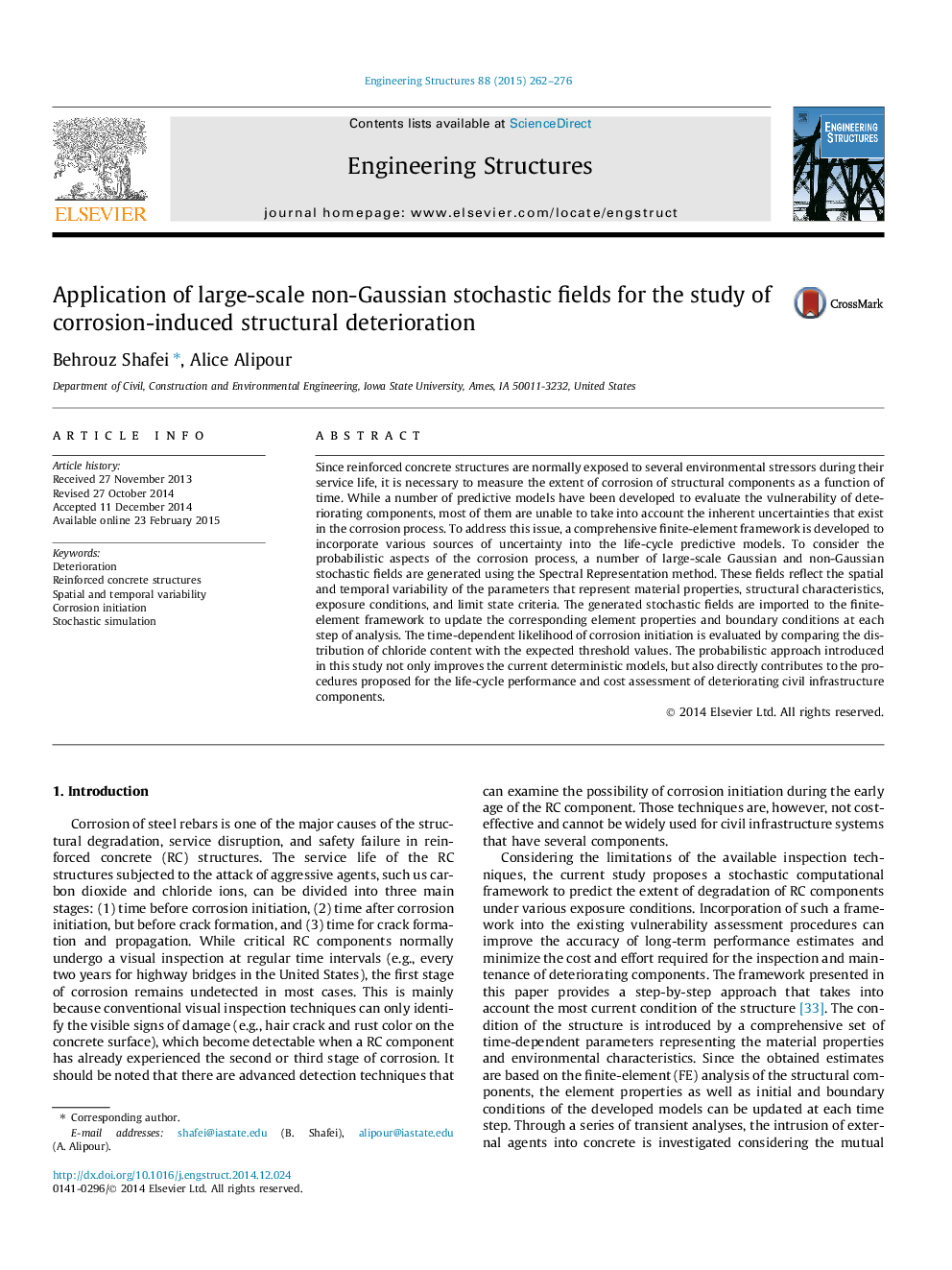| Article ID | Journal | Published Year | Pages | File Type |
|---|---|---|---|---|
| 6740521 | Engineering Structures | 2015 | 15 Pages |
Abstract
Since reinforced concrete structures are normally exposed to several environmental stressors during their service life, it is necessary to measure the extent of corrosion of structural components as a function of time. While a number of predictive models have been developed to evaluate the vulnerability of deteriorating components, most of them are unable to take into account the inherent uncertainties that exist in the corrosion process. To address this issue, a comprehensive finite-element framework is developed to incorporate various sources of uncertainty into the life-cycle predictive models. To consider the probabilistic aspects of the corrosion process, a number of large-scale Gaussian and non-Gaussian stochastic fields are generated using the Spectral Representation method. These fields reflect the spatial and temporal variability of the parameters that represent material properties, structural characteristics, exposure conditions, and limit state criteria. The generated stochastic fields are imported to the finite-element framework to update the corresponding element properties and boundary conditions at each step of analysis. The time-dependent likelihood of corrosion initiation is evaluated by comparing the distribution of chloride content with the expected threshold values. The probabilistic approach introduced in this study not only improves the current deterministic models, but also directly contributes to the procedures proposed for the life-cycle performance and cost assessment of deteriorating civil infrastructure components.
Keywords
Related Topics
Physical Sciences and Engineering
Earth and Planetary Sciences
Geotechnical Engineering and Engineering Geology
Authors
Behrouz Shafei, Alice Alipour,
